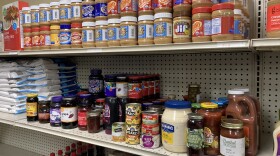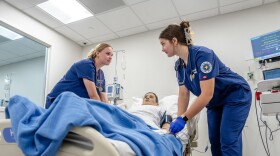With restaurant dining rooms closed and additional restrictions now being placed on grocery stores due to the coronavirus pandemic, some people are taking to making some staples from scratch.
Bread is a favorite. According to Google Trends, searches for sourdough and related recipes were at least five times higher in the last month than ever before.
>>The Latest WUWM & NPR Coronavirus Coverage
Milwaukee’s Central and Eastern European roots make it a big bread town, so it wasn’t hard to find an expert baker thanks to the “Milwaukee Foodie” group on Facebook. Michael Solovey is a Milwaukee-area chef and baker turned educator who has spent countless hours teaching people to bake better. He says there are two main factors at play when baking bread.
“Number one is the force expanding the bread outward called leavening, and the second is gluten, which is used to hold the bread together, and give it structure and density,” says Solovey.
“I liken the process of baking bread to the physics of a star ... leavening is the explosion, gluten is the gravity.”
"I liken the process of baking bread to the physics of a star ... leavening is the explosion, gluten is the gravity."
With grocery stores running low on staples such as packaged dry yeast, which is a typical ingredient in American baking, many are resorting to old world-style leavening agents.
Solovey recommends doing a science experiment by combining flour and warm water, allowing natural — or ambient — yeast to develop on their own. Yeast is a natural fungal culture that must be alive, healthy, and chemically maintained to provide bread with leavening.

“Milwaukee has a lot of ambient yeast from all of the breweries,” says Solovey, though the process can take a few weeks. He says it’s ready to bake when it begins to ferment and bubble on its own.
Another way is to get some “starter” from a friend who has already maintained and fermented it by consistently feeding the culture flour and warm water. The starter is combined with more flour, water, and other desired ingredients to make bread, pizza crust, pastries, and more.
“There’s so many possibilities that I don’t even know which ones to start with,” says Solovey. “Anything you want a real crust to anything that you want real flavor in, you can add these starters to them.”





